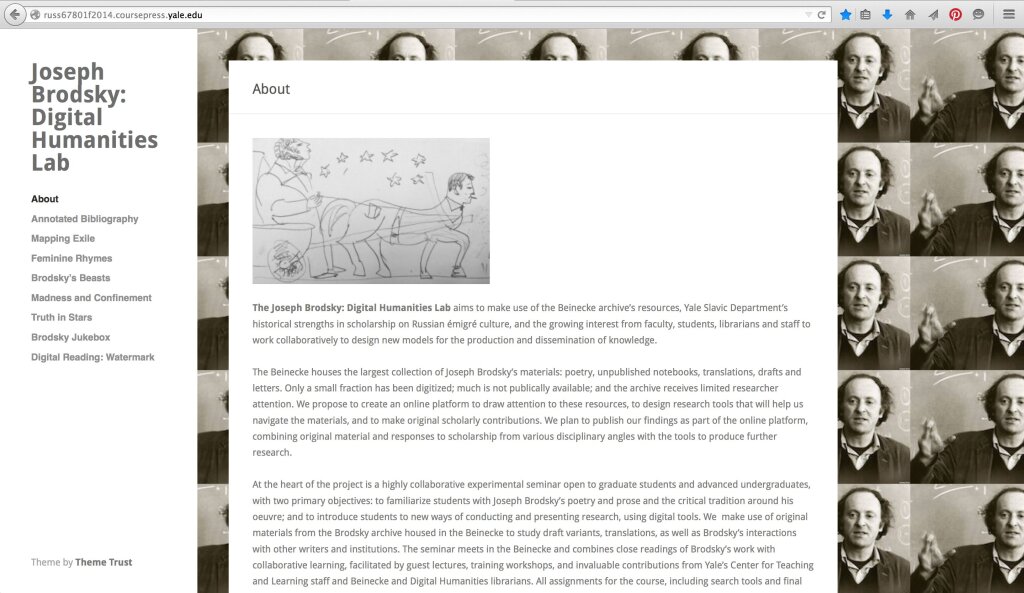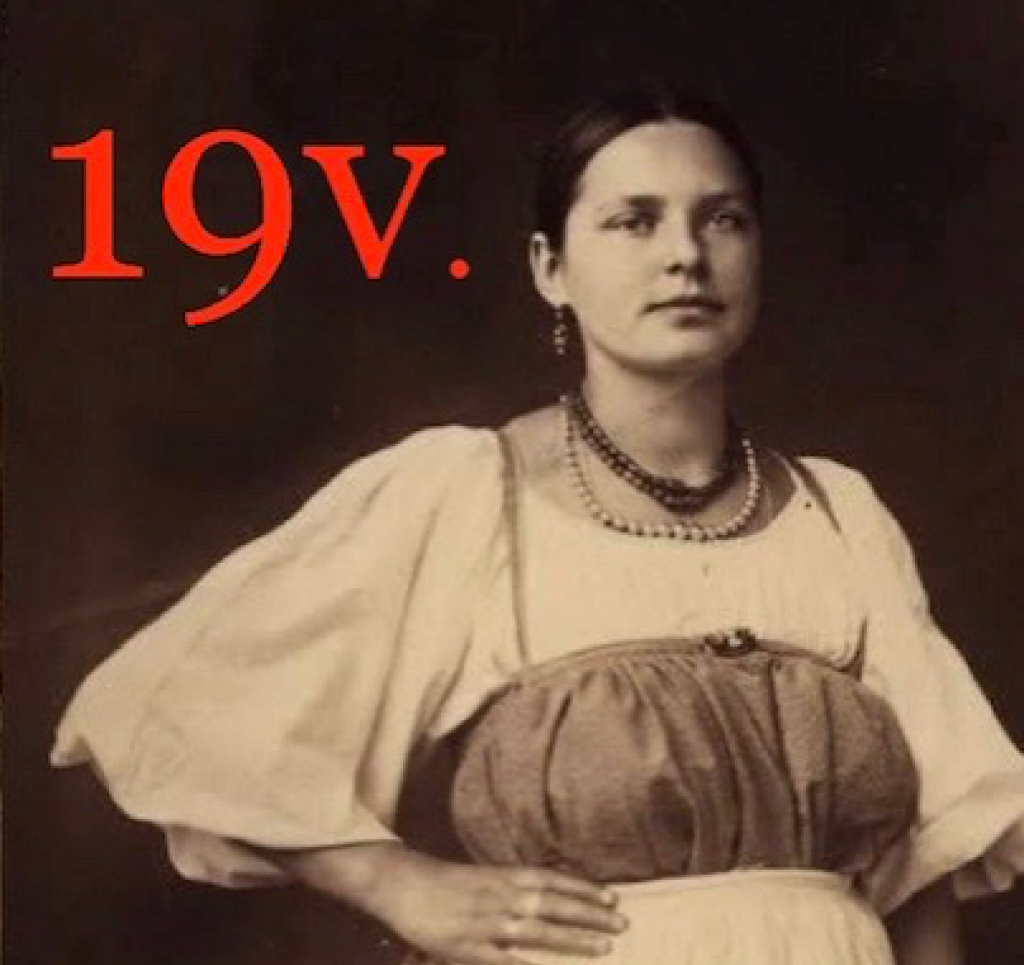Note: This is part of our new series of posts highlighting new work by scholars in our field.
Marijeta Bozovic is Assistant Professor of Slavic Languages and Literatures at Yale University
To introduce the Joseph Brodsky: Digital Humanities Lab, I might first say a few words about Brodsky and the Beinecke Archive’s holdings. Brodsky (1940-1996), the most famous dissident poet of the Soviet era, had a literary biography to die for. After arrests, internal exile, forced incarceration in mental asylums and a show trial with lines that could have come from a Tom Stoppard play, he was thrown out of the Soviet Union in 1972. By 1987, he had won the Nobel Prize and was translating and writing original prose and poetry in English. Had his heart not cut him short in 1996, he could very well still have been around today, teaching at the Five Colleges Consortium and weighing in on current events with opinions undoubtedly infuriating to both the left and right.
Instead, we have the Northern American archive, the largest collection of his drafts, notebooks, translations, and correspondence with the likes of W. H. Auden, Susan Sontag, Derek Walcott, and more. The sheer amount of the material means that much of it hasn’t been looked at. Researchers who do come in, often work on the same canonical poems and problems, repeating one another in isolated exercises, and reinforcing particular interpretations and modes of reading. It seemed the perfect starting point for an experimental project: we have a large archive, a prolific author with a vast network of cultural contacts, legendary reading lists, extensive travels. We also have competing translations: Brodsky’s own, collaborative, or heavily redacted, sometimes accompanied by vitriolic letters accusing the translators (or author) of betraying all of poetry and the English language. How might we look at all this differently?
From the start, the Brodsky Lab was an attempt to experiment with pedagogical practice. The Yale Slavic Department has a historical strength in émigré material; meanwhile, our graduate students are increasingly interested in learning new methods and frameworks, as well as in expanding their training in archival research of both the paper and digital kind. Many are open to non-academic career paths. As the generation of scholars who rose to prominence working on this material subsides from leadership positions in the field, it seems time for young scholars to reimagine their approaches and try new interpretive strategies.
The Fall 2014 seminar was my first attempt to combine a more traditional seminar on Brodsky’s poetics with experimental research methods. It was as much a collaboration as a class, with as many instructors as students—including Peter Leonard, our Digital Humanities librarian; Lisa Conathan, the Beinecke librarian who processed the Brodsky papers; and Trip Kirkpatrick, in IT and now the Center for Teaching and Learning. This was my favorite aspect of the project: pulling into the open the diverse kinds of work and collaborations that usually take place behind the scenes at the university. We called it a humanities lab to emphasize the sense of experiment, that we were learning methods and tools that might be used with various other materials, and that our research questions would evolve during the course.
Why Digital Humanities?
So what did we actually do; and what did it cost us in terms of time and resources? We began with theoretical readings of the recent classics of DH, including Franco Moretti’s Distant Reading and Matt Jockers’ Macroanalysis, alongside Russian and English-language scholarship on Brodsky’s work and life. Pedagogically speaking, this forced us to think critically about what constitutes “legitimate” research in the humanities, and how that changes over time. The students were sharply critical of positivist approaches and impressionistic, ideologically marked studies alike—which forced them to try to formulate what they hoped to do with their own writing. Class discussions and final presentations were, above all, remarkably self-aware.
Personally, I find the most compelling potential uses of DH to be in estranging and destabilizing notions of canon and modes of reading: this is where I find continuity in Moretti’s work with Formalism and Marxist theory. On a much smaller project-based level, I wanted to see whether something interesting could be done even within a single author archive. Using the Beinecke and the human and technological resources available at Yale, we tried to dig through archeological levels of changing language in translations, or map changes over time in the use of metaphors. How might such lenses and zoomed-out views estrange us from more expected readings and familiar works?
I wanted students to combine old and new approaches with a fresh perspective: from archival research, draft comparisons, reading vast amounts of poetry, counting feminine rhymes preserved in English translation, to computer-assisted part of speech tagging and interactive timelines. We experimented with Voyant for word frequency analysis and to build search tools; with topic modeling; and with various kinds of data visualization. We made discoveries—usually accompanied by peals of laughter—that should have been obvious (Brodsky really, really liked the noun “snow”); some less so (the number of distinct animal species named in his Russian language poetry is staggering); as well as many I knew nothing about (his attempts at multi-lingual punning in private correspondence in the first few years of exile). The technical savvy varied from project to project depending on background and interest, but everyone was open and a quick study. I certainly learned a great deal, about both Brodsky and data mining, along with the rest of the group. (Full disclosure: my mother was a professor of mathematics and computer science.)
We tried to focus on original research and to work collaboratively across projects: I dedicated class time for the entire group to work under the direction of each student on her project. All assignments were designed to have a use outside the class: in place of response papers, students wrote short summaries of previous scholarship that now make up an online annotated bibliography. The goal was to think of each result as a tool for other researchers. Final papers were presented as conference talks at a symposium at the end of the semester as well as online. Nearly all of the students plan to continue with their projects in one way or another: approximately half are presenting at professional conferences in the coming year.
What's Next
It should be said that, since the first iteration of the course was in Fall 2014, before Yale dedicated space and resources to a DH lab, our approach was more like guerilla DH: things got done through sheer inventiveness and goodwill. When the material wasn’t digitized and we had no resources to do so properly, we used our phones and class-sourced large tasks. The Brodsky materials are under copyright, so we had to work carefully with the Brodsky Estate; some poems have never been published and there are potentially sensitive materials in the archive. I tried to make this too part of the learning experience: we badly need a working model for how to combine the ideals of open access scholarship with the realities of copyright and archival holdings.
Of course, the time investment wasn’t exactly negligible. There were moments when I wanted to kick myself for doing it, to put it mildly; and if I had accurately estimated the time the project would take at the onset, I might well have spooked. I’m glad I didn’t. While this is a side project for me at the moment, independent from my primary research (my first book is on Nabokov’s late works and canon formation in emigration; my second is on contemporary politically engaged Russian poetry as a new avant-garde), it pushes me to learn and to think in dramatically different ways, which I find paradoxically productive and inspiring. I see the project as an investment into the future, for both the students involved and for myself.
Moving forward, what I hope to do is to use the Brodsky pilot project as a kernel for something much larger. In the future, I could envision an online platform and research initiative dedicated to the study of Russian and East European avant-gardists and émigrés in the twentieth century, with a focus on poetry and theory. This approach would foreground the continuity of Russian Formalism, structuralism, and semiotics with theories of DH entering critical discourse today. We might then examine the close relationship between avant-garde poetry and Formalist theory and the dissemination and development of interpretive practices through emigration, including the formation of the leading departments of Slavic Languages and Literature in the United States today. How did the émigrés shape the reading practices, archival and library collections, and institutional formations of Slavic Studies as a field? What might we see if we mapped the movement of persons, texts, and ideas, as linked to the research patterns of our field? And how might the above be reimagined—indeed, how are these already being reshaped—in the digital age, given the technological, socio-economic, and political present?



